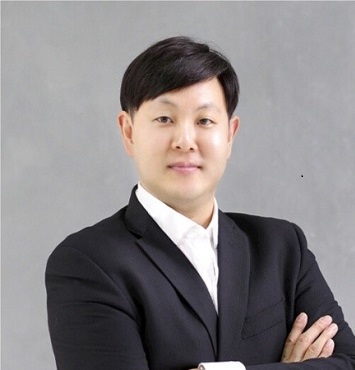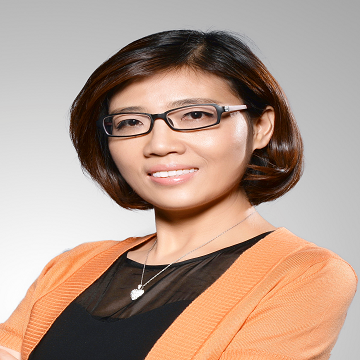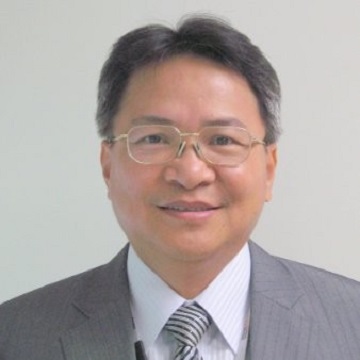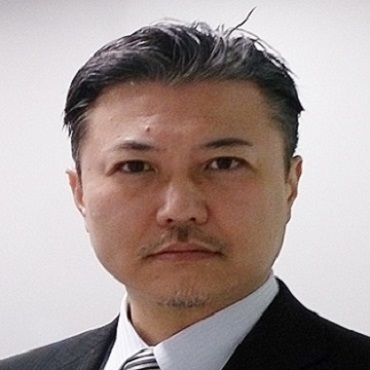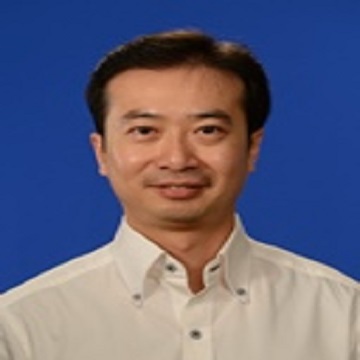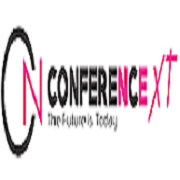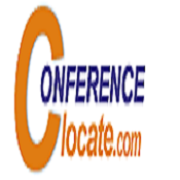
Materials Engineering-2020

Theme: Advancing The Research & Innovation on Materials Engineering & Nanotechnology
Meetings International presents the Materials Engineering and Nanotechnology Conference, scheduled on November 25-26, 2020 at Singapore City, Singapore; which will allow the professional to characteristic their exploration of work through introductions and have a probability to select up mastering about the present circumstance of Materials Engineering. Major attractions of this event would revolve around keynote presentations, oral presentations and poster presentations. This year we are focusing on the theme “Advancing the research & innovation on Materials Engineering and Nanotechnology".
Materials engineering and Nanotechnology seems to be the constantly trending subject matter with modern day research technologies. Everyone who explores to strengthen their knowledge and gain extended about advanced technical cleverness is welcome to present/get new ideas. Materials Engineering Conference captivates individuals both from commercial and academic worlds yet establishes a firm link and binds us together with the recent updated accomplishments. We provide a good opportunity by admiring your updated research and also by publishing it in our respective journals. We assure our attendees return to their place with the self-belief to improve their abilities and outfitted with certified approaches to work with us. This meeting will allow the attendees to acquire these new updates and share their experiences with well-recognized speakers globally.
Session 1: Materials Engineering and Technology
Material Engineering is that the part of science manages the structure, properties, execution, portrayal, and technique for materials that identified with material science and technology development or assembling like metals, polymers, earthenware production, and composites, and so on. Through the assistance of the material science, we'll capture the historical backdrop of the material like physical and substance properties so in this way a reason material science and building choices a wonderful extension altogether in expository new technology and designing, nanotechnology, biomaterials, metallurgy, disappointment examination, examination materials.
Session 2: Advanced Materials Devices
The aim of Advance material Engineering is to report on outcomes that deliver new perceptions into, or considerably accepting the properties of materials or phenomena related with their design, synthesis, processing, description, and operation. Simulation of finite systems and electronic structure methods comes under computational Materials Engineering. Interatomic models are also termed as force fields. All features of modern materials modelling are of interest, together with quantum chemical methods, density functional theory, semi-empirical and classical approaches, statistical mechanics, atomic-scale simulations and phase-field techniques.
Scientific Session 3:Â Advanced Biomaterials and bio devices
The design and development of biomaterials play a significant role in the diagnosis, treatment, and prevention of diseases. When used with highly selective and sensitive biomaterials, cutting-edge bio devices can allow the rapid and accurate diagnosis of disease, creating a platform for research and development, especially in the field of treatment for prognosis and detection of diseases in the early stage. This book emphasizes the emerging area of biomaterials and bio devices that incorporate therapeutic agents, molecular targeting, and diagnostic imaging capabilities.
Scientific Session 4:Â Graphene and 2D Materials
Graphene was the primary 2nd material to be isolated. Graphene and different two-dimensional materials have a protracted list of distinctive properties that have created it a hot topic for intense research and also the development of technological applications. These even have Brobdingnagian potential in their title or together with Graphene. The extraordinary physical properties of Graphene and different 2nd materials have the potential to each enhance existing technologies and additionally produce a spread of latest applications. Pure Graphene has associate degree exceptionally big selection of mechanical, thermal and electrical properties. Graphene may greatly improve the thermal physical phenomenon of a fabric rising temperature reduction. In applications that need terribly high electrical physical phenomenon Graphene will either be employed by itself or as associate degree additive to different materials. Even in terribly low concentrations Graphene will greatly enhance the power of electrical charge to flow in an exceedingly material. Graphene’s ability to store electricity at terribly high densities is outstanding. This attribute, additional to its ability to apace charge and discharge, makes it appropriate for energy storage applications.
Scientific Session 5: Emerging Smart Materials
The medieval era where stone, bronze, steel was used, now ceramics, minerals developed, from which metallurgical fields were born. Research on metals, alloys, silica and carbon manometry has been researched in physics, chemistry, thermodynamics and many other areas of science. Material Science has now revolutionized the metals and alloys from semiconductor, plastic, biomaterials, rubbers, polymers, magnetic materials, medicinal implant materials, nanometers, etc. And it has not stopped yet! Smart structures are tools made from smart materials capable of feeling stimuli, respond to it and return to their original state after removing the stimuli. Self-healing materials, magnetic and thermoelectric materials, polycaprolactone are emerging smart structures, etc.Â
Scientific Session 6: Polymer Science & EngineeringÂ
Polymer science and engineering is the field of science that studies the synthesis and applications of chemical compound materials (polymers). Crystallization and polymerization of polymers, chemical compound engineering science, materials science and physics study and apply chemical compounds in many applications like lithium-ion polymer battery (LiPo), electro active polymers, chemical compound brush, self- assembled chemical compound films, chemical element nano spheres, collagen, enzymes, elastin, cellulose, chitin, plastics, fibers, and adhesives. Sensible materials like electricity materials, self-healing, and from memory polymers have additionally return underneath analysis during this field.
Scientific Session 7: Biosensors and Bioelectronic Materials
The biosensor is an analytical device which converts a biological response into an electrical signal. The device is made up of a transducer and a biological element that may be an enzyme, an antibody or a nucleic acid. The characteristic identifying segment can be a substance, a receptor counter pro, or DNA. Bioelectronics is used to help improve the lives of people with disabilities and diseases. For example, the glucose monitor is a portable device that allows diabetic patients to control and measure their blood sugar levels. Bioelectronics is used to help improve the lives of people with disabilities and diseases. For example, the glucose monitor is a portable device that allows diabetic patients to control and measure their blood sugar levels.
Scientific Session 8: Materials for Green Technology
Green technology incorporates a constantly developing group of procedures and materials from techniques for creating energy to non-toxic cleaning products. At present the expectation of this field is to bring innovation and changes in daily life of similar scale to the information technology evolution over past two decades. Sustainability is addressing the necessities without yielding the ability addressing the necessities without yielding the ability of future generations to meet their own requirements. The reduction of waste and pollution by the change in patterns of consumption and production is termed as source reduction. To reduce the use and generation of hazardous substances the invention, design and application of chemical products is known as green chemistry. The benefits of green chemistry will be discussed at Material Science Conference.
Scientific Session 9:Â Nanotechnology
Nanotechnology is rapidly evolving and is merged with the field of Materials Science. Nanotech-level smart materials or nanomaterial’s synthesis can have different properties for finding healthcare, construction, and material applications in the material industry. Nanotechnology is rapidly evolving and it has been mixed in the field of materials science. Nano-level smart materials or nanometers to synthesis materials industry can have different properties to find healthcare, construction, and content applications. Â
Scientific Session 10: Carbon Nanostructures & Graphene
Carbon is solidly connected with almost all that we oversee in a standard calendar. In light of its phenomenal properties, for instance, high strength at characteristic conditions, differing hybridizations, strong covalent bond plan and basic of blends improvement, carbon has been a point of consistent excitement for a couple of locales. A nanostructure is a structure of medium size among moment and nuclear structures. Nanostructural detail is a microstructure at the nanoscale.
Graphene is an allotrope of carbon as a two-dimensional, atomic scale, the hexagonal cross-area wherein one particle shapes each vertex. It is the basic helper part of various allotropes, including graphite, charcoal, carbon nanotubes and fullerenes. It can in like manner be considered as an uncertainly significant sweet-smelling iota, a conclusive case of the gathering of level polycyclic fragrant hydrocarbons
Session 11 :Â Sustainable Energy and Development
Depletion of natural resources and a worldwide increase in population has created a worldwide demand for energy. Materials hope for renewable energy sources, super capacitors, energy storage in batteries, thermo electrical devices, energy conversion through star cells and fuel cells. For the growing would like for production and energy storage, systems as well as numerous materials, operations and properties are used, for instance, batteries like atomic number 3 batteries area unit employed in numerous kinds of mobile devices, as well as installation, computers, recreation devices, power tools, toys, games, lighting, and medical devices. Semiconductor devices have replaced vacuum tubes and from these semiconductor materials diodes, transistors, light-weight emitting diodes (LEDs) have emerged for energy efficiency.
Session 12:Â Fiber and Composites
Fiber-fortified composite (FRC) is superior fiber composite accomplished and created conceivable by cross-connecting plastic fiber atoms with tars within the FRC material framework through a restrictive sub-atomic re-designing procedure, yielding a results of glorious auxiliary properties. Through this accomplishment of sub-atomic re-designing selected physical and basic properties of wood area unit effectively cloned and unconditional within the FRC item, nevertheless alternative basic ascribes to yield execution properties higher than modern wood. FRC could be a composite artefact that contains of 3 parts: the strands because the irregular or scattered stage, the lattice because the unceasing stage, and ) the fine interphase space, otherwise known as the interface. this can be a kind of with-it composite gathering, that influences the employment of rice husk, to rice structure, and plastic as fixings. This innovation includes a technique for refinement, mixing, and exacerbating regular filaments from plastic squander streams to form a high-quality fiber material in an exceedingly chemical compound network. The appointed waste or base crude materials used as {a part a neighbourhood an area unit district a region a locality a vicinity a section} of this incidence are those of waste thermoplastics and completely different categories of plastic squander as well as rice husk and wood. the frustration systems in FRC materials incorporate delamination, intra laminar grid breaking, longitudinal framework half, fiber lattice debon ding, fiber haul out, and fiber fracture.
-
Composite materials fabrication
-
Carbons & Kevlar fibers
-
Application prospect
-
Improvised composite materials
Session 13:Â 3D printing materials
After over a year of research, countless filament spools, and hundreds of hours of printing, our team is proud to present the Ultimate 3D Printing Materials Guide. Covering over a dozen of the most popular materials in use today, this guide will help you select the best material for your next project or improve the quality of your prints with tips from our experts. Use the tags below to quickly sort the materials based on their characteristics, or view our extensive Filament Properties Table for a detailed side-by-side comparison. Once you have selected a material, view a detailed article with pros and cons, hardware requirements, best practices, pro-tips, example projects and more! Whether you’re new to 3D printing or an advanced user looking to experiment with a new material, this guide has everything you need to make the most of your next project.
Session 14:Â Advanced Ceramics & Composite Materials
Ceramic materials are inorganic and non-metallic porcelains, tiles, enamels, cements, glasses and refractory bricks. Today, "ceramics" has gained a wider meaning as a new generation of materials influence on our lives; electronics, computers, communications, aerospace and other industries rely on a number of their uses. In general, advanced ceramic materials include electro-ceramics, optoelectronic-ceramics, superconductive ceramics and the more recent development of piezoelectric and dielectric ceramics. They can be considered for their features including mechanical properties, decorative textures, environmental uses, energy applications, as well as their usage in bio-ceramics, composites, functionally graded materials, intelligent ceramics and so on.
Scientific Session 15: Optical, Magnetic and Electronic Materials
Optics, magnetic and electronic content research combines the principles of many fields of science such as solid state physics, chemistry, materials science, electronic and chemical engineering. Magnetic materials will be employed in research and data storage, super magnetism and spintronics, while electronic content will receive application in the form of electrics, nanometer/photonic material and pseozoillectric in electronic, semiconductor and energy industries. Their optical properties have been modified to meet the demands of energy conservation, national security and commercial sector in different materials like glass, ceramics, electrics, semiconductors, nanopromocytes and polymer fibers.
Market Size & Forecast:
Global materials engineeing market is expected to reach USD 1,978,331.6 Million by the end of 2024 from USD 1,370,242.2 Million in 2016. Advanced material market is anticipated to achieve absolute $ opportunity of USD 510,244.1 Million 2018-2024. Additionally, advanced material segment is expected to grow at a CAGR of 5.1% over the forecast period i.e. 2018-2024. Moreover, advanced material segment is expected to observe the growth rate of 1.3x over the forecast period. Advanced Material segment is expected to achieve Y-o-Y growth rate of 6.4% in 2024 as compared to previous year.
Materials Engineering in Asia:
In terms of regions, Asia Pacific is slated to account for a leading share of 58.0% by 2024 in the Materials Engineering market. The growth in the region can be attributed to increasing number of industries and rising manufacturing activities in this region. Besides, rapid industrialization and urbanization in developing Asian countries such as China and India is also expected to impel the growth of advanced material market in the Asia Pacific. China is the prominent market driving the growth in the region. China advanced material market was held at USD 389,099.1 Million in 2016 and is anticipated to reach USD 530,564.7 Million by the end of 2024. China Materials Engineering market accounted for a market share of 47.8% in 2016 and further, is expected to stood at a market share of 46.2% by the end of 2024. In addition to this, Europe region is also anticipated to witness satisfactory growth during the forecast period. Economies such as U.K., Spain are likely to be the key contributors to the growth of advanced material market in this region. Furthermore, rising demand for energy in Middle East & Africa region is expected to fuel the growth of Materials Engineering market in this region.
Why Singapore?
This fast development and prosperity have also given Singapore a population density among the world’s highest, with the allure of such a strident economy and the ease of doing business proving hard to resist for many immigrants. It is also known for its cleanliness – famously, you aren’t allowed to chew gum in Singapore, to ensure none ends up on the pavements – as well as for its punctual public transport and clear roads filled with gleaming automobiles, for which time-limited certificates of entitlement must be purchased. Singapore also has very strict laws against drug use, leading to one of the lowest rates of drug use in the world. Singapore’s science and technology transformation over 50 years mirrors her remarkable leap from survival to excellence. Fifty years ago, technology served a functional role, today it is the central engine powering an ambitious economy. Singapore’s water technology, port management capability and petrochemical ecosystem are noteworthy. With the increasingly competitive global technology landscape, it is crucial that Singapore has developed in scientific research also. Environmental and Water Technologies sector and the Interactive and Digital Media sector were identified as rapid growth areas for development.
Scope and Importance:
Materials Engineering is an expansive, different and multidisciplinary field. It is consistent cooperation with fundamental teaches and is additionally adding to address all Grand Societal Difficulties. This commitment is to such an extent that various reports have been delivered as of late in Europe and world - wide, with the point of illustration an exhaustive picture and proposing facilitated activities towards the foundation of rational systems in the field. The present report buys into this viewpoint, with a specific objective which is to add to the foundation of a thorough perspective on the job in effective advancement of key empowering innovations.
Growth Drivers & Challenges:
Rising electrical & electronics sector and development of aerospace sector is expected to drive the growth of advanced materials market over the forecast period. Continuous enhancement in research and development activities regarding Lithium-ion battery has found a decrease of 80% in the past 6 years due to which purchase of Lithium-ion battery has increased due to its low cost. Further, this factor is anticipated to drive the growth of materials engineering market. According to OICA, 94.7 million motor vehicle productions was held to be in 2016. Moreover, this represented a Y-o-Y growth of 5.0% as compared to 2015. Additionally, automotive production is anticipated to increase on the account of rising demand. This factor signals promising growth of the materials engineering market. Increasing construction solutions provided by steel makers for buildings and infrastructure is expected to drive the market at a significant rate across the forecast period. In contrast with, high cost of materials engineering such as Nanomaterial's and other such product is anticipated to limit the growth of advanced materials market over the forecast period.
Meetings International recognizes the commitment and amazing work in all fields of academics and research. By recognizing their contribution; Meetings International inspires and motivates scholars, researchers and academics by awarding the Best YRF and Researcher Awards in all academic disciplines and categories along with other specific awards. These awards include prestigious Certificate of Award with other gifts.
To be eligible for the award Students interested in having their posters considered for the Materials-Engineering 2020 conference, they must have submitted an abstract of their poster to the conference. The award committee will consider all posters that relate to the study of public opinion, whether they focus on theory, substantive findings, research methods, and/or statistical techniques used in such research. All posters will automatically be considered for the Poster Awards and the posters will take place in the conference venue and Poster Judges will select the best posters. The winners will be formally announced during the closing ceremony. The winners will receive a certificate award.
Outstanding Masters/Ph.D./Post. Doc Thesis work presentation Awards
Materials-Engineering 2020 gives the opportunity to young researchers in the different field of conferences. The best participants are selected as per their research abstract before the conference. If you are a young and dynamic researcher than you can join our conferences to explore new idea and research. A panel of judges will select the best YRF. Best YRF will be recognized publicly at the end of the conference. The Best YRF Awards will be given to the most outstanding presentation presented by a participant who has registered under the student category. Undergraduates, Master students, and Ph.D. students will be considered under this category. Selection of the YRF will be made on the basis of the participant contribution in the respective research field each submission will be accepted based on the sessions of the conference. Irrelevant submissions will be rejected. The acceptance and rejection of abstract submissions will be selected by the committee. All submissions will go through a quality checking. Final approved abstract will consider for YRF award.
Materials Processing -2020 chooses a relevant keynote speaker to speak at conference. All accepted keynote speakers proposals will be considered for the Best Keynote Speaker Award. The committee will select a number of candidates for the award among the accepted proposals. The winner will be selected at the conference, taking into consideration both the proposal and the presentation. Best keynote speaker can help to boost motivation, change their way of thinking and make audience energized and inspired. For Keynote the person should be eminent or highly affiliated like Dean, Professor, HOD, Chair persons, CEO, CFO, MD etc. Selection of the Best Keynote Speaker will be made on the basis of the participant contribution and years of experience in the respective research field. Each submission will be accepted based on the quality of abstract and conference theme. Irrelevant submissions will be rejected .The acceptance and rejection of abstract submissions will be selected by the Organizing committee. All submissions will go through a quality checking. Final approved abstract will consider for Keynote award.
Materials-Engineering 2020 believes in recognising our best speaker. The best speaker is selected as per their research abstract before the conference. All winners are determined by a selection panel. This awards is designed to recognise and identify outstanding speakers who have achieved recent extraordinary eminence and success. Being an outstanding speaker means to deliver a message that engages an audience. The Outstanding speaker awards will also be given on the basis of organization and professionalism of presentation, communication skills of the presenter and appropriate use of time. Each session will be evaluated separately. For speaker the person should be Professor, Researcher, Scientist, Entrepreneur etc. Selection of the Speaker will be made on the basis of the participant contribution in the respective research field. Each submission will be accepted based on the quality of abstract and conference sessions. Irrelevant submissions will be rejected. The acceptance and rejection of abstract submissions will be selected by the Organizing committee. All submissions will go through a procedure of quality checking by our team. Final approved abstract will consider for outstanding speaker awards.
The Organising committee can avail in the process of managing the multiple tasks that need to be done. Committee members, having a good erudition of the event management plan, are well placed to provide training, supervision and assistance to other personnel involved in the organisation of the event. Meetings International will honour as a best OCM the individual who has demonstrated their support and guidance throughout the conference. OCM should be eminent or highly affiliated like Dean, Professor, HOD, Chairpersons, CEO, CFO, MD etc. Selection of the best OCM will be made on the basis of the participant contribution and years of experience in the respective research field. They must have good number of research papers and citations and should be more number of years of experience.
- Poster Size: Each poster should be approximately 1x1 M long. The title, contents and the author’s information should be clearly visible from a distance of 1-2 feet.
- Content: Use fonts such as Arial/Times New Roman in a reasonable font size that should be easy to read.
- The spacing between the lines should also be taken into consideration.
- A very simple format should be used representing all the details about the research carried by the author.
- Long narrated paragraphs should be avoided.
- Short phrases and bulleted points should be used in the poster to present the main highlights of the work done.
- Only abstracts submitted in English will be reviewed.
- Abstracts must not exceed 500 words (excluding the title, author affiliation and biography)
- Abstract should follow the instructions on the following template (Abstract Template).
- Do not include references or figures in the keynote abstract.
- Abstract should contain biography, photograph and short description about research
- Abstract must contain presenter name, affiliation and country
- Abstract title and abstract content should be relevant
Meetings Int. is a worldwide pioneer in delivering top notch gatherings, workshops and symposia in every significant field of science, innovation and medication worldwide receives 400,000+ online visitors with 1000+ sessions which confirm the outstanding pool of new users and visitors creating a platform to build your market place globally. Since its initiation, Meetings Int. has been related with national and global affiliations, organizations and elevated level people, committed to have world class meetings and occasions so its provide a big platform to show your product and advertise.
The explorer’s traffic is the benchmark for advertisement and the Materials Engineering website is continually dragged in observer over the world. As specify by the Google Analytics, in excess of 2,602 researchers are visiting to our conference sites. Materials Engineeringhelp you to put the spotlight on your brand by advertising with more than 9 million+ readers worldwide and about 5 million+ hits every month on our site. We provide a good opportunity to boost your business on our platform. We offer a range of eye-catching advertising spaces and branding. Researchers from significant nations including United States, Japan, United Kingdom, India, France, Taiwan, and Germany visit our conference site. Subscribers and conference attendees can be your upcoming enthusiastic customers. We maintain high quality and ethical standards in event industry, which makes us unique and better than the rest.
Advertisement banner must be provided by the advertising company and must be in the jpg or jpeg format. The banner must be of high resolution and must not have copyright infringement.
For further queries, connect our Program Manager at
materialsengineering@annualmeetings.net; contact@meetingsint.com
You can also connect us via WhatsApp: +65 3158 1626 / +44 1250 400 009
Expert Level (Scientific Research Award)
Meetings International is announcing Young Scientist Awards through Materials Engineering and Nanotechnology Conference (Materials Engineering 2020) which is scheduled at Singapore City, Singapore during November 25-26, 2020. This Materials Engineering focuses on “Advancing the Research & Innovation on Materials Engineering & Nanotechnology"
Materials Engineering 2020 and upcoming conferences will recognise participants who have significantly added value to the scientific community of Materials Engineering and provide them outstanding Young Scientist Awards. The Young Scientist Award will provide a strong professional development opportunity for young researches by meeting experts to exchange and share their experiences at our international conferences.
Materials Engineering 2020 focuses mainly on Materials Engineering and Technology, Advanced Materials Devices, Advanced Biomaterials and bio devices, Graphene and 2D Materials, Emerging Smart Materials, Polymer Science & Engineering, Biosensors and Bioelectronic Materials. Materials engineering operating committee is providing a platform for all the budding young researchers, young investigators, post-graduate/Master students, PhD. students and trainees to showcase their research and innovation.
Eligibility:
Young Scientists, faculty members, post-doctoral fellows, PhD scholars and bright Final Year MSc and M.Phil. candidates. Persons from Scientific Industry can also participate.
Benefits: The Young Scientist Feature is a platform to promote young researchers in their respective area by giving them a chance to present their achievements and future perspectives.
- Acknowledgement as YRF Awardee
- Promotion on the conference website, Young Researcher Awards and certificates
- Link on the conference website
- Recognition on Meetings Int. Award Page
- Chances to coordinate with partners around the world
- Research work can be published in the relevant journal without any publication fee
Criteria:
- All presented abstracts will automatically be considered for the Award.
- All the presentation will be evaluated in the conference venue
- All the awards will be selected by the judges of the award category
- The winners of the Young Scientist Award will receive award certificate.
- The awards will be assessed as far as plan and format, intelligence, argumentation and approach, familiarity with past work, engaging quality, message and primary concerns, parity of content visuals, and by and large impression.
Guidelines:
- All submissions must be in English.
- The topic must fit into scientific sessions of the conference
- Each individual participant is allowed to submit maximum 2 papers
- Abstract must be submitted online as per the given abstract template
- Abstracts must be written in Times New Roman and font size will be 12
- Abstract must contain title, name, affiliation, country, speakers biography, recent photograph, image and reference
Conditions of Acceptance:
To receive the award, the awardee must submit the presentation for which the award is given, for publication at the website, along with author permission. Failure to submit the PPT, and permission within the designated timeframe will result in forfeiture of award.
Award Announcements:
Official announcement of the recipients will occur after the completion of Materials Engineering Conference.
- Materials Engineering and Technology
- Advanced Materials Devices
- Advanced Biomaterials and bio devices
- Graphene and 2D Materials
- Emerging Smart Materials
- Polymer Science & Engineering
- Biosensors and Bioelectronic Materials
- Materials for Green Technology
- Nanotechnology
- Carbon Nanostructures & Graphene
- Sustainable Energy and Development
- Fiber and Composites
- 3D printing materials
- Advanced Ceramics & Composite Materials
- Optical, Magnetic and Electronic Materials
- Journal of Polymer Science & Applications
- Journal of Nanomaterials & Molecular Nanotechnology
- Research and Reports on Metals
5 Organizing Committee Members
2 Renowned Speakers
Soshu Kirihara
Osaka University
Japan
Shien-Ping Feng
Hong Kong University
Hong Kong


